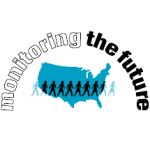If you haven’t already heard, Colorado and Washington have begun the process of selling marijuana recreationally. Analysts, scientists, government agencies, and the public within these states (not to mention the rest of the nation) prepare themselves for an onslaught of data to be used for future fine-tuning, or, if things go downhill, the complete abandonment of similar progressive capital ventures. But the question isn’t really whether or not such a campaign will be successful, but why it doesn’t really matter.
The fact is that we’re seeing a change in the community, whether we (as a nation, in a large sense; as a treatment center company, in a smaller sense) like it or not, and that change is that cannabis sativa is being likened more and more to cigarettes and alcohol than to an illicit drug. And the nation’s, indeed the world’s, adolescents are carrying the torch. First, the good news: according to an annual survey conducted by Monitoring the Future (MTF), one in ten 8th, 10th, and 12th graders are reporting an exponential decrease in the number of tobacco cigarettes smoked within the past 30 days. But there’s a catch: these same teens are only trading out cigarettes because they’ve begun opting for something a little more, shall we say, “effective.” Marijuana. What’s more, the dangerous effects of regular marijuana use have increasingly been shelved onto the backburner of teens’ minds over the course of the last two decades; for 12th graders, the idea that the drug is even minutely harmful has decreased from 2012’s 44.1% down to less than 40% now in 2013. In short, marijuana could be seen as more sinister than cigarettes because not only is it harmful, but users (specifically teens) don’t think it is.
“This is not just an issue of increased daily use,” said NIDA Director Nora D. Volkow, M.D. “It is important to remember that over the past two decades, levels of THC – the main psychoactive ingredient in marijuana – have gone up a great deal, from 3.75 percent in 1995 to an average of 15 percent in today’s marijuana cigarettes. Daily use today can have stronger effects on a developing teen brain than it did 10 or 20 years ago.”
Whether this input will have any effect on the recent news in Washington or Colorado remains to be seen, however it is certainly undeniable that the next few months, or perhaps even years, will be an interesting one for drug and alcohol treatment centers (especially Pacific Hills) across the U.S.
What do you think?
As a supplemental extra for this post, we’re including some effects of Marijuana that perhaps you didn’t know before:
1) Marijuana smoke is an irritant to the lungs, and frequent marijuana smokers can have many of the same respiratory problems experienced by tobacco smokers, such as daily cough and phlegm production, more frequent acute chest illness, and a heightened risk of lung infections.
2) A number of studies have shown an association between chronic marijuana use and mental illness. High doses of marijuana can produce a temporary psychotic reaction (involving hallucinations and paranoia) in some users, and using marijuana can worsen the course of illness in patients with schizophrenia.
3) Associations have also been found between marijuana use and other mental health problems, such as depression, anxiety, suicidal thoughts among adolescents, and personality disturbances, including a lack of motivation to engage in typically rewarding activities.
4) Marijuana raises heart rate by 20-100 percent shortly after smoking; this effect can last up to 3 hours. In one study, it was estimated that marijuana users have a 4.8-fold increase in the risk of heart attack in the first hour after smoking the drug.
5) Finally, marijuana use has been linked in a few recent studies to an increased risk of an aggressive type of testicular cancer in young men, although further research is needed to establish whether there is a direct causal connection.








